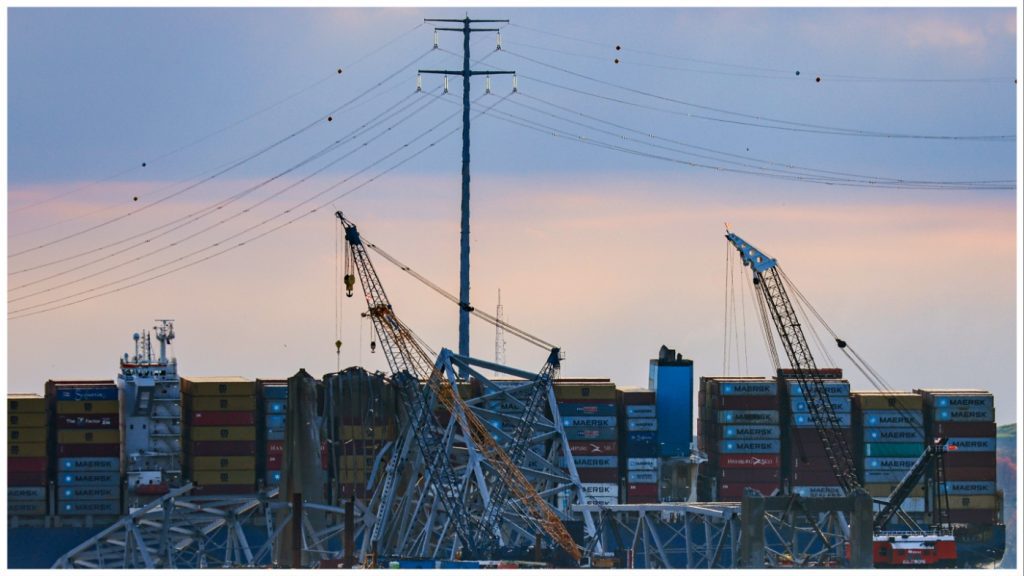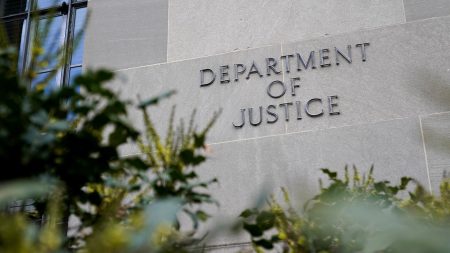The U.S. Coast Guard is getting ready to create a temporary alternate route for important commercial ships near the collapsed Francis Scott Key Bridge in Baltimore, as reported by officials on Sunday.
“This will be an important initial step in the process of reopening the port of Baltimore,” said Coast Guard Capt. David O’Connell, the federal on-scene coordinator for the joint command response. said in a statement. “By opening this alternate route, we will support the flow of marine traffic into Baltimore.”
The new channel is part of a gradual plan to reopen the main route to the Port of Baltimore, which has been closed since the bridge collapsed last Tuesday.
A cargo ship named Dali was heading to Sri Lanka last Tuesday night when it lost power and hit the bridge, causing it to fall into the Patapsco River. The ship was able to send a distress signal to stop traffic on the bridge, but eight construction workers were on the steel structure when it collapsed.
Two of the workers survived and were rescued, while two bodies were found by divers in a submerged truck and four others are believed to be dead. The search was temporarily halted until crews can remove the debris, concrete and superstructure that is creating hazardous conditions for divers.
Crews began removing the first piece of wreckage from the water over the weekend, Maryland Gov. Wes Moore (D) said over the weekend.
The additional channel will be located on the northeast side of the main channel and will be marked with government lighted navigation aids, the Coast Guard said. It will have a controlling depth of 11 feet, horizontal clearance of 264 feet and a vertical clearance of 96 feet.
O’Connell, in an interview with CBS News, said the Coast Guard is also planning an additional channel to run along the south side of the main channel that could accommodate boats up to 14 feet. Pre-existing debris along the south side needs to be removed, which is expected to take place this week, he said.
These channels will mainly be for response vessels, important vehicles and people aiding in the recovery process, CBS News reported. There is currently a 2,000-yard safety zone around the bridge that no vessel or person is allowed to enter without permission from the Captain of Port or a “designated representative,” as per the Coast Guard.
He told the outlet a third channel with up to 25 feet of depth is being discussed, though debris around the Dali needs to be removed first.
“I anticipate smaller draft commercial vessels, maybe some small tugs in the next few days,” O’Connell said to CBS News. “That’s that 13 to 14 foot draft, but that unfortunately, that’s not a lot of vessels. But it certainly is a start on our way to phase three, which will hopefully get us to 20 to 25 foot draft and that would be a lot more commercial vessels.”
State and federal officials have said the closure of the Port of Baltimore will not only impact Maryland’s local economy, but also have ripple effects on a national level. The port supports over 15,000 direct jobs and more than 139,000 indirect jobs, equal to about $3.3 billion in personal income, Axios reported last week.
Officials said that while they are attempting to maintain the flow of business as much as they can, the process of salvaging and rebuilding will be extensive and there is no exact schedule for when the Port of Baltimore might be able to reopen.









